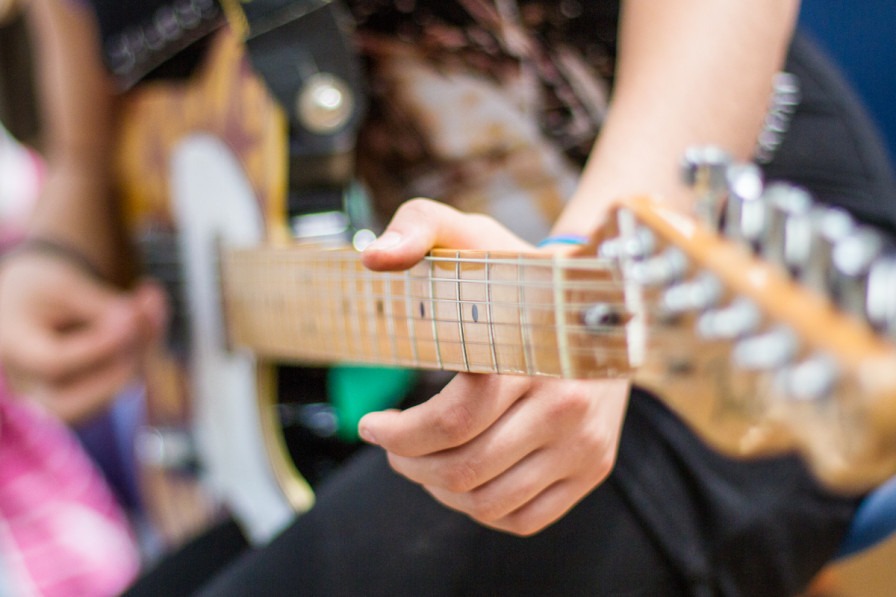Fun & Foley: First time music-making with a teenager with SEN one-on-one

When I first met Lori*, she was enthusiastic but was quite shy and didn’t speak much. Whilst I have ran workshops and music group sessions before, this was the first course I ran for Rhythmix. It was also the first time working one-on-one with a teenager with Special Educational Needs.
We discussed what she was interested in, and I discovered she’s a drummer and has played some piano. We started by writing songs together on an iPad using Garageband. Whilst she was still quite shy at the start, she quickly took the initiative and created some very interesting and original compositions.
Lori is very musical, and has a great sense of rhythm, and alongside the software’s pre-made loops, she created her own recordings and loops using electronic instruments on the iPad and acoustic instruments (such as the acoustic guitar, which she had never played before).
After a couple of sessions she became very relaxed and we developed a good rapport. This was essential and great to experience. It was then I found out she had a passion for Foley work, and was very interested in creating sound effects.
Up to then we had been mainly creating songs, but I decided we’d spent one session creating our own sound effects. We analysed a clip of one of her favourite cartoons, Scooby Doo, and worked out where there were sound effects and what was creating them on screen, and what could’ve possibly created them. We then found things in the room that could create similar sounds (such as dragging a stick along a radiator made a “chattering teeth” effect), recorded them on the iPad and started moving them around to match the video we were using. Lori told us in the session and in her feedback that this was particularly enjoyable.
On at least three occasions, a group of young people were hanging around and being disruptive in the car park, which noticeably scared Lori. The youth workers understandably couldn’t ask them to move as it’s a youth centre.
After the second time they were there, I was told by a different youth worker that that particular group regularly hang around the centre as a place to smoke cannabis, and that the police should be called if they were seen there smoking. On the third occasion, a youth worker caught them smoking cannabis and they left immediately. We decided to move the session into a different part of the centre that was out of the sight of the car park but unfortunately we could still hear the group and Lori was still clearly on edge.
I made sure we had time at the start for us to relax and chat a little, and that we had a short break in the middle which helped.
Overall I feel Lori enjoyed the sessions, especially the Foley session, and she became noticeably more confident as the sessions went on. I believe she now has a better understanding of how songs are constructed in terms of composition and structure and improved her knowledge of what different instruments are and how to play them.
Importantly, Lori’s mum seemed very happy with the work we were doing and asked if I could send her the tracks we recorded (which I’m in the process of doing).
I feel I have learnt a lot more about how the charity and it’s sessions run. I never used Garageband before in session and so it was really good to try it out with Lori and see what worked well with her. I now also better understand the roles involved in sessions, and how Rhythmix interacts with youth centres and workers.
*Name changed to protect identity of young person.
We worked with Lori as part of the ‘Littlehampton Sounds’ project funded by Youth Music Fund A to West Sussex Music Trust.
